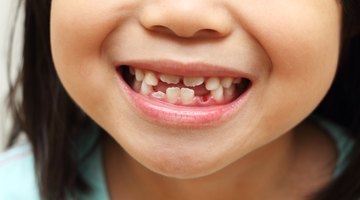How Long Does it Take for a Baby to Cut Molars?
As a parent, you may realize your child is teething sooner than anyone else. Moodiness, irritability and a lack of sleep, for the both of you, may indicate that your child is cutting more teeth. Molars begin to come in shortly after your child's first birthday. The timing varies by child, but there are general guidelines to give you an understanding of your child's tooth development.
Anatomy
The upper and lower gums are equipped with three types of teeth. The front teeth are the incisors. Just behind the incisors are the canine teeth. Behind the canines are two sets of molars, the first and second molars. These usually are the last to come in.
Start and Duration

When Does a Toddler Cut Molars?
Learn More
Every child is different, so there is no one-size-fits-all guidelines for the length of time it takes for molars to come through. Instead, a time frame range can help you judge your child's situation. The upper and lower first molars begin between 12 and 17 months. They will be fully in between 27 and 32 months. The upper second molars begin to erupt between 24 and 33 months and will finish between 38 and 48 months. The lower second molars come in between 24 and 36 months and will be set between 34 and 48 months.
Symptoms
Cutting molars is no walk in the park for you or your baby. The first indication that your child is teething may be a change in mood. Your child may become more irritable and begin to experience sleep interruptions. If you look inside his mouth, you may see red and swollen gums near the area in which the molars are erupting.
Relief

How Long Before You See Teeth Once Teething Symptoms Start?
Learn More
The molars may take longer than the other teeth to emerge. These teeth have a larger surface area that needs to break free from the gums. This not only increases the time frame, it also makes it more painful for your child. Ease her pain by offering her something cold to gnaw on, such as a chilled teething ring or a wet, cold washcloth. With your doctor's approval, use a topical treatment that will ease the pain.











